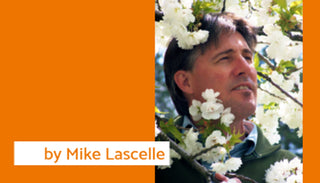I should start by admitting that the inspiration for this article came from very unexpected quarters…our new cat. Her name is Tessa and she was a rescue from Katie’s Place (a great place to find a feline) with some trust issues, so at first, she was constantly in hiding except for feeding time. One way we found to draw her out was to place a bowl of birdseed on the back patio, right in front of our French doors. The subsequent chatter of numerous sparrows, towhees, juncos, and chickadees sparring over free food almost always drew her out from beneath the sofa. Once emerged she would stealthily slink over to the windows and peer outside with malicious intent – but since Tessa is an indoor cat, the birds quickly learned to ignore her, which made the display of avian comradery all the more enticing.
Then I began thinking about the many species of wild birds in our own backyard, which is quite diverse, considering we live in an urban townhouse. And while feeders are an effective means of drawing them in, there are many ornamental plants that provide nectar, seeds, and even nesting material that will attract them naturally. So here are thirteen species of birds found right here in Maple Ridge, each paired with a perennial, summer flower, shrub, or tree guaranteed to bring them to your garden.
Pyracantha Berries Attract the Dark-Eyed Junco
(📸[L]: Channel City Camera Club - Wikipedia | 📸[R]: MK Lascelle)
The humble Junco loves to feed on the ground, hopping around and foraging, but when the soil freezes or is covered with snow, you will find them feasting on the Pyracantha or Firethorn berries.
Oceanspray Seeds Attract the Bushtit
(📸[L]: Alex Critch - Wikipedia | 📸[R]: Walter Siegmund - Wikipedia)
Although more common near the forest’s edge, the diminutive Bushtit is often found in small flocks swarming our native Oceanspray (Holodiscus discolor) for its nutritious seeds.
Sunflower Seeds Attract the Steller’s Jay
(📸[L]: Sarbjit Batiga - Wikipedia | 📸[R]: MK Lascelle)
Often thought of as the winged bullies of B.C., the Steller’s Jay's rasping squawk and rapacious hunger make them great candidates to strip those beautiful sunflowers of their seeds before they have a chance to fall apart of their own accord.
Aster Seeds Attract the White-Breasted Nuthatch
(📸[L]: Mdf - Wikipedia | 📸[R]: MK Lascelle)
This tiny bird is often found foraging for insects on tree bark while standing upside-down. The White-Headed Nuthatch will also seek out those dormant asters in winter if you have left the seedheads to dry.
Cranberry Fruit Attracts the Cedar Waxwing
(📸[L]: Judy Gallagher - Wikipedia | 📸[R]: MK Lascelle)
Resembling a Cardinal in form but with brownish-grey plumage with yellow highlights, the Cedar Waxwing can always be found foraging on edible berries such as those found on Highbush Cranberry (Viburnum opulus).
Red-Flowering Currant Nectar Attracts the Rufous Hummingbird
(📸[L]: USFWS Pacific Region - Wikipedia | 📸[R]: MK Lascelle)
This orange-breasted species (more obvious on males) is migratory and returns to the Lower Mainland in late winter, just as the Red-Flowering Currant (Ribes sanguineum) comes into bloom, providing them with nectar and us with stunning rose-red racemes.
Rudbeckia Seeds Attract the American Goldfinch
(📸[L]: Breck22 - Wikipedia | 📸[R]: MK Lascelle)
Never have two species complemented each other better than the brilliant bright yellow American Goldfinch and the golden blossoms of Rudbeckia or Black-Eyed Susan, which also provide seed forage later in the season.
Sumac Seedheads Attract the Spotted Towhee
(📸[L]: Pranav Tadepalli - Wikipedia | 📸[R]: MK Lascelle)
The Spotted Towhee is actually a large, handsome sparrow with rust-coloured sides, white bars, and an unusual cat-like call. It often forages on the ground but can be found among the brilliant fall foliage of Staghorn Sumac (Rhus typhina) where it will be pecking at the edible red seedheads.
Echinacea Seeds Attract the House Finch
(📸[L]: John Benson - Wikipedia | 📸[R]: MK Lascelle)
This is a common urban species but what catches the eye are the males with their rosy-red heads and breasts. These will enjoy the seedheads of dormant Echinacea or Purple Coneflower, just be sure not to deadhead late in the season.
Salal Berries Attract the Varied Thrush
(📸[L]: Minette Layne - Wikipedia | 📸[R]: MK Lascelle)
One of our largest and most beautiful wild birds with distinct bluish-grey banding over orange plumage. They are berry lovers, with our native Salal (Gaultheria shallon) being one of their favourites.
Winterberry Attracts the American Robin
(📸[L]: Mdf - Wikipedia | 📸[R]: MK Lascelle)
We are all familiar with the Robin and their territorial nature, especially when there are worms or berries at stake, such as those found on the very cold hardy Ilex verticillata or Winterberry. Just remember you need both a male and female plant.
Willow Catkins Attract the White-Crowned Sparrow
(📸[L]: Wolfgang Wander - Wikipedia | 📸[R]: MK Lascelle)
The White-Crowned Sparrow can often be found nesting right here at Amsterdam Garden Centre, and these versatile birds not only eat unopened willow catkins but will also wait until they unfurl and prey upon the insects that pollinate the willow.
Saskatoon Berries Attract the Black-Capped Chickadee
(📸[L]: Alan D. Wilson - Wikipedia | 📸[R]: MK Lascelle)
Here are two all-Canadian standards, as the ever-present Black-Capped Chickadee really loves to forage our native Saskatoon Berries (Amelanchier alnifolia), so be prepared to share.


